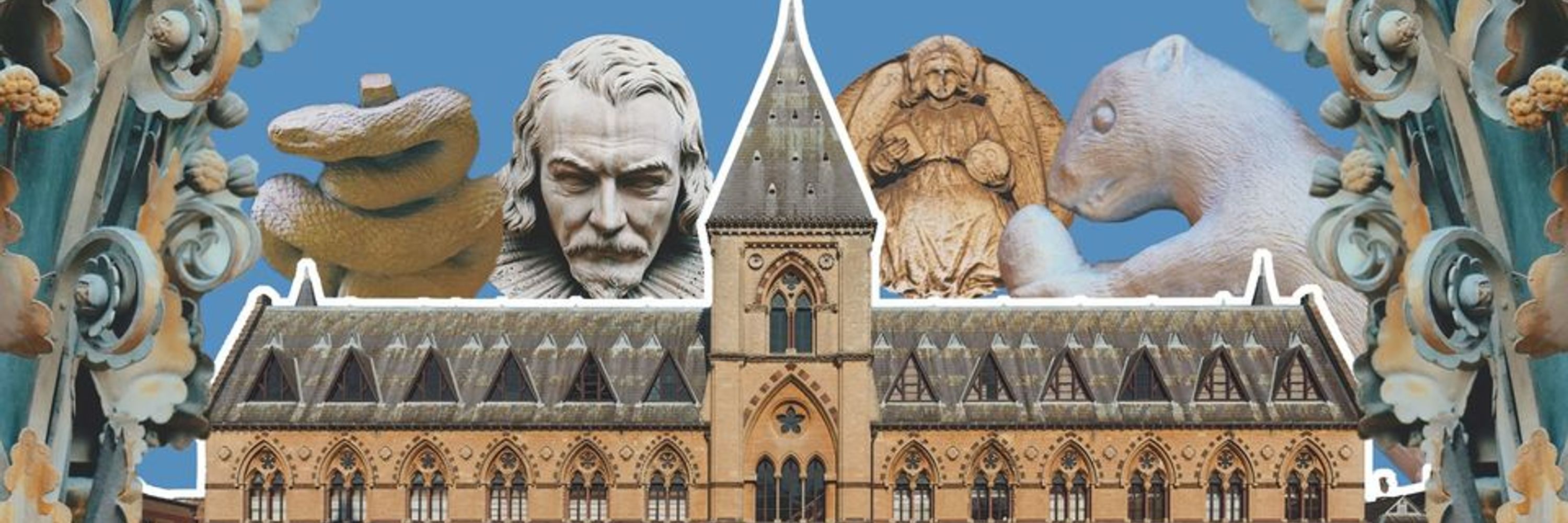
Oxford University Museum of Natural History
@morethanadodo.bsky.social
A stunning Victorian building home to 7 million objects. Free entry, open 10-5 every day.
The bear came from a rescue centre, before living out her life at the sanctuary she was kept as a pet. It was stipulated that when she died her remains were to be used for educational purposes, and now, here she stands.
November 8, 2025 at 1:22 PM
The bear came from a rescue centre, before living out her life at the sanctuary she was kept as a pet. It was stipulated that when she died her remains were to be used for educational purposes, and now, here she stands.
Nom nom nom
November 6, 2025 at 12:57 PM
Nom nom nom
All the scans, reconstructions, and 3D models will be made freely available in open repositories. That means anyone, from entomologists to curious hobbyists, could explore these ancient insects in digital space.
oumnh.ox.ac.uk/post?slug=am...
oumnh.ox.ac.uk/post?slug=am...

Museum Blog
oumnh.ox.ac.uk
November 6, 2025 at 11:34 AM
All the scans, reconstructions, and 3D models will be made freely available in open repositories. That means anyone, from entomologists to curious hobbyists, could explore these ancient insects in digital space.
oumnh.ox.ac.uk/post?slug=am...
oumnh.ox.ac.uk/post?slug=am...
What emerges won’t just be pretty pictures. These models could rewrite parts of insect evolutionary history.
November 6, 2025 at 11:34 AM
What emerges won’t just be pretty pictures. These models could rewrite parts of insect evolutionary history.
Each piece of amber will be scanned in full at a resolution fine enough to spot features a few micrometres across (a micrometre is one-thousandth of a millimetre — about one-hundredth the width of a human hair). 20 chosen specimens will then be magnified further still for an even sharper look.

November 6, 2025 at 11:34 AM
Each piece of amber will be scanned in full at a resolution fine enough to spot features a few micrometres across (a micrometre is one-thousandth of a millimetre — about one-hundredth the width of a human hair). 20 chosen specimens will then be magnified further still for an even sharper look.
Why does this matter? Well, these insects lived during the Early Eocene, around 53 million years ago, when flowering plants had taken over the world in what scientists call the Angiosperm Terrestrial Revolution (ATR).
November 6, 2025 at 11:34 AM
Why does this matter? Well, these insects lived during the Early Eocene, around 53 million years ago, when flowering plants had taken over the world in what scientists call the Angiosperm Terrestrial Revolution (ATR).
At SOLEIL, near Paris, a group of researchers led by OUMNH’s own Dr Corentin Jouault are preparing to shine one of the world’s brightest X-ray beams through over 100 blocks of Oise amber, each containing a fossilised insect no larger than a fingernail.
November 6, 2025 at 11:34 AM
At SOLEIL, near Paris, a group of researchers led by OUMNH’s own Dr Corentin Jouault are preparing to shine one of the world’s brightest X-ray beams through over 100 blocks of Oise amber, each containing a fossilised insect no larger than a fingernail.
The most revealing details, like delicate mouthparts, are sealed away under the resin’s glossy surface. Cutting into them would destroy what makes them precious.
Enter the SOLEIL synchrotron.
Enter the SOLEIL synchrotron.

November 6, 2025 at 11:34 AM
The most revealing details, like delicate mouthparts, are sealed away under the resin’s glossy surface. Cutting into them would destroy what makes them precious.
Enter the SOLEIL synchrotron.
Enter the SOLEIL synchrotron.


